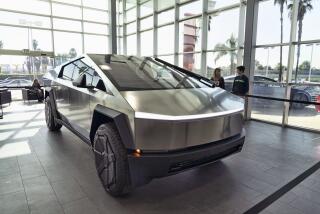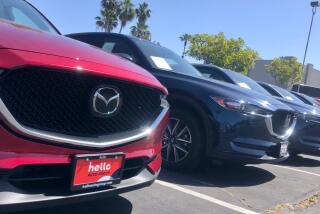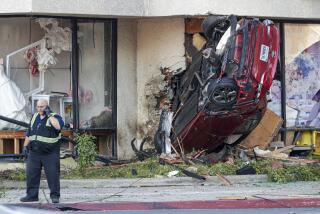Light Trucks Ought to Be Made as Safe as They Are Popular
- Share via
When you shop for groceries this week, take a look at the vehicles in the parking lot. Many of them will be small trucks, mini-vans and Jeep-type vehicles. These “light trucks” are among the hottest sellers, accounting for about one-third of passenger vehicles sold in the Unite States.
This sounds like a triumph of free enterprise. Manufacturers are providing relatively inexpensive and practical transportation; families are buying up these models as fast as they roll off the assembly line. Unfortunately, safety has not kept pace with popularity.
In 1988 nearly 8,300 Americans were killed and about 500,000 were injured in light-truck crashes. Most people buying light trucks don’t realize that they lack basic safety features required for many years in passenger cars.
The missing safety standards are not “luxury” options. Rather, they are basic protections that every family deserves and every customer should expect.
Since 1968 all passenger cars have been equipped with headrests to prevent head and neck injuries. Not so for light trucks. Often, a truck passenger’s “headrest” is a window just inches away.
Since 1971 all passenger cars must meet minimum roof-strength standards. Not so for light trucks, even though many models are twice as likely to be involved in a fatal roll-over.
Another missing protection is the high, center-mounted brake light. The light provides improved brake warning to drivers following passenger cars. These more visible lights could prevent many of the 270,000 annual rear-end collisions involving light trucks.
Since 1973 passenger cars have been required to meet minimum side-impact protection standards (cars have protective door beams). Not so for light trucks.
Finally, light trucks are not required to have air bags or automatic seat belts. This protection is important because the occupants of Jeep-type vehicles and small trucks are more than twice as likely to be ejected from their vehicle during a crash as those in passenger cars.
Imported mini-vans and Jeep-type vehicles also are exempt from passenger-car safety standards. In a final twist of irony, importers of these vehicles convinced the Treasury that many models are “passenger cars,” subject to a customs duty that is only one-tenth of the truck duty. Importers shouldn’t have it both ways. A “car” for tariff purposes should, to the extent possible, be a “car” with respect to passenger-car safety standards.
It is time to make these family vehicles safer. The Senate Commerce Committee has forwarded legislation to the full Senate that would require the Transportation Department to initiate rules applying these basic safety measures. In addition, we recently asked Transportation Secretary Samuel K. Skinner to move forward unilaterally. He could use his existing authority to order these safety improvements now.
Light-truck vehicles offer practical and enjoyable transportation. But they should be as safe as other passenger cars.






